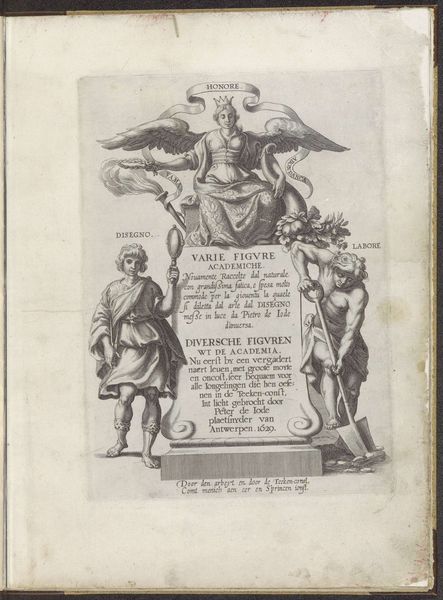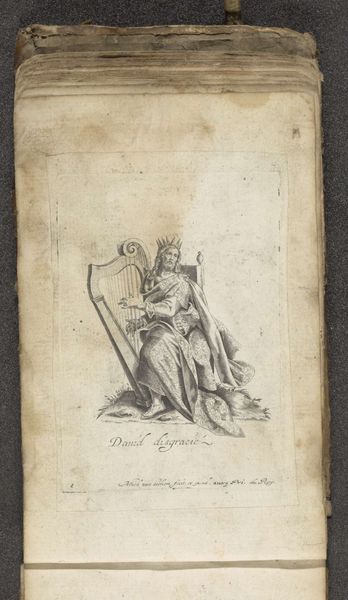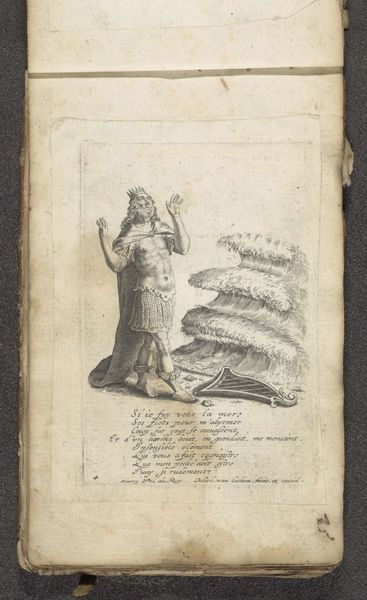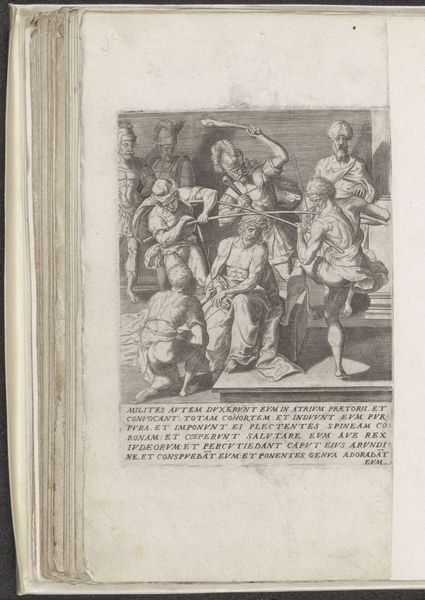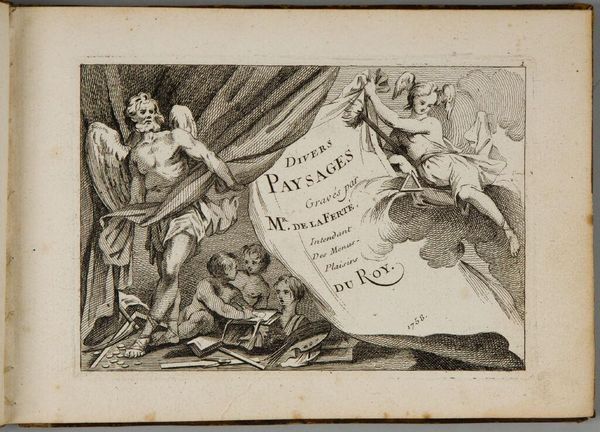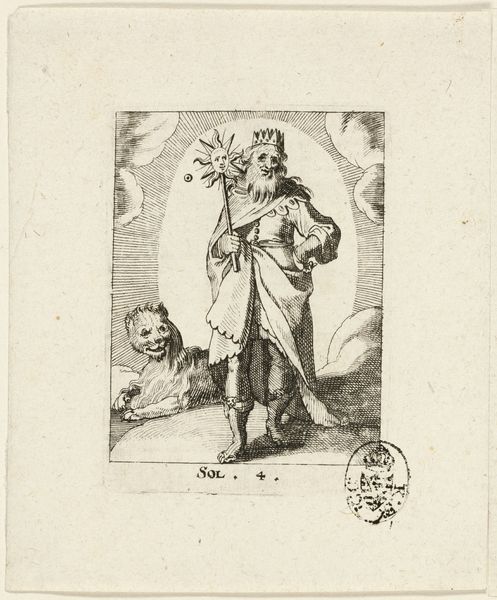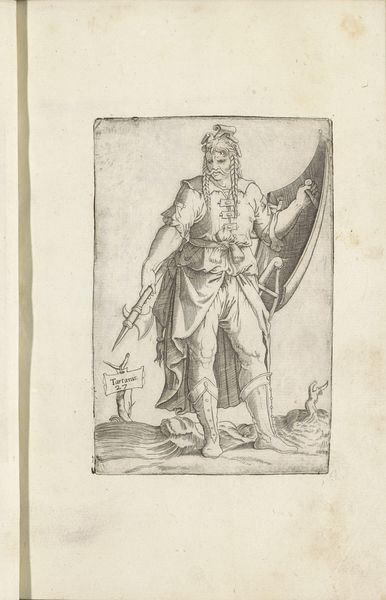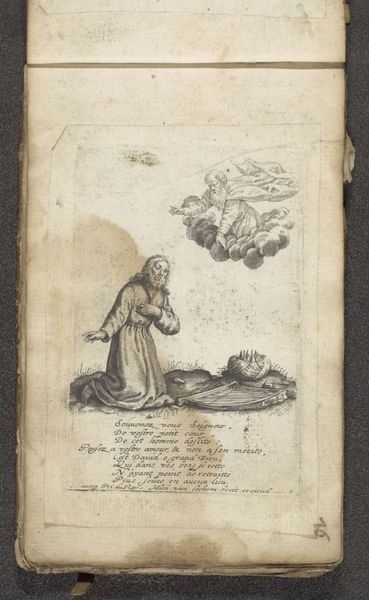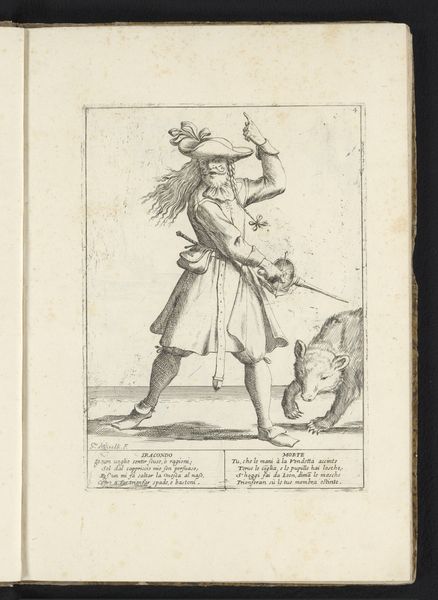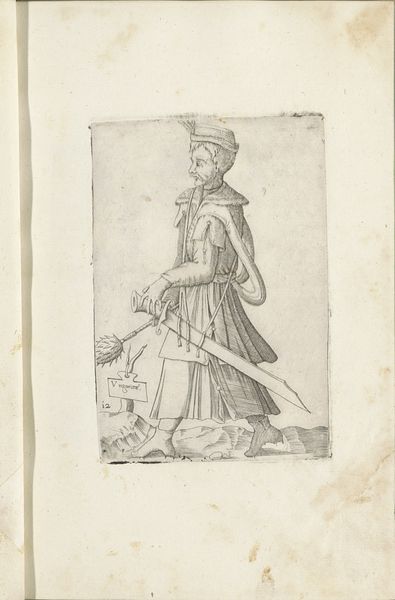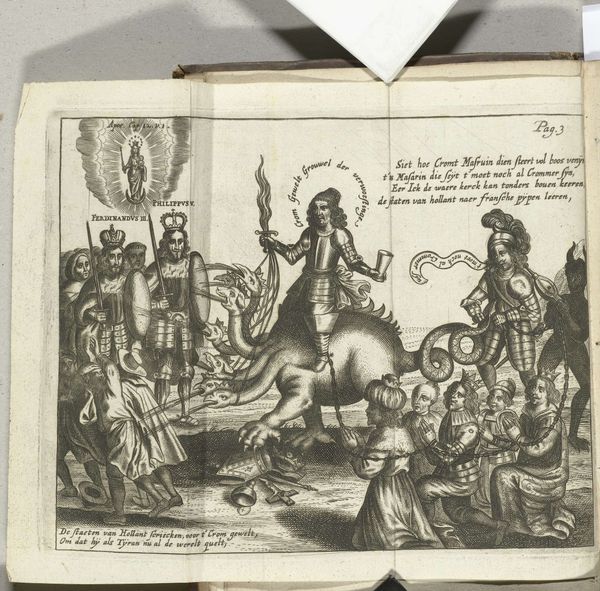
drawing, paper, ink, engraving
#
drawing
#
allegory
#
narrative-art
#
baroque
#
figuration
#
paper
#
ink
#
coloured pencil
#
engraving
Dimensions: height 104 mm, width 71 mm
Copyright: Rijks Museum: Open Domain
Curator: Here we have "David en twee hellemonsters" by Michel van Lochom, created sometime between 1625 and 1647. It's a drawing made with ink on paper, employing engraving techniques. The artwork shows David with two hellish monsters. What strikes you first? Editor: The starkness. It’s essentially black ink on aged paper. The rawness of the engraving gives it a very immediate feel, a direct link to the artist’s hand. There's something almost brutal about the sharp lines used to render flesh and the infernal creatures. Curator: Indeed. The figure of David presents a complex character within the sociopolitical context of the time. While David's traditionally seen as a righteous figure, here, standing alongside these monsters, what could this positioning convey? What narratives are subverted or reinforced by that arrangement? Editor: Well, I’m drawn to the material contrast again. Look at the king’s adornments—the cloak, the armored skirt—all created through precise, deliberate work, while the paper, with its discolorations, feels almost accidental. The deliberate artifice is placed in such tension with the process and means that it really speaks to an uneasy combination of intent and creation. Curator: Precisely. And let’s consider the period. The Baroque style often used such dramatic visual devices. The very act of portraying David, perhaps in conflict or compromise with hellish elements, serves to explore deeper religious, moral, or even political anxieties circulating within Dutch society at the time. It is worth wondering whether David's strength and resolve would make him able to face inner struggles of guilt or temptation as representative for that audience? Editor: Absolutely. And those "hellish monsters" clearly have a strong bestial aspect, rendered through tangible marks upon the page. Van Lochom transforms base materials into powerful symbols, inviting us to confront the uncomfortable realities of the society around them and reflect how virtue might exist so near to sin. Curator: Ultimately, the intersectional narratives—between good and evil, power and morality—forces the audience to assess historical attitudes in their modern contexts. Editor: Right. And on my part, I cannot separate my reading from an analysis on materials and their construction that brings the art making to center stage.
Comments
No comments
Be the first to comment and join the conversation on the ultimate creative platform.
